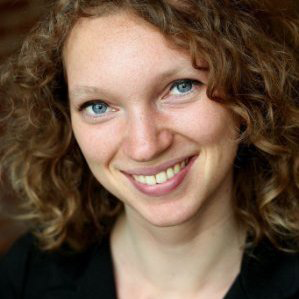Albertine moved to Washington to work with energy related topics at the World Bank
Albertine Potter van Loon graduated from the master’s programme in Sustainable Energy Engineering in 2018. She is now working at the World Bank in Washington.

Hi Albertine, what are you doing at the moment?
At the moment, I work at the World Bank, a multilateral development bank dedicated to ending extreme poverty and boosting shared prosperity. I am based in the World Bank’s Headquarters in Washington D.C. where I work on energy related topics. Thus far, my job has focussed on two specific topics. First, power system planning, where my department and I provide technical assistance to client countries on how to develop their electricity systems, i.e. what new generation and T&D capacity to add and how to dispatch it. Second, renewable energy resource mapping, which is targeted at reducing the information gap for potential investors. The type of work I do is very much in line with the Transformation of Energy Systems: Policy and Management track of the Sustainable Energy Engineering master’s programme.
I have also done some additional projects during my time at the World Bank. The two most notable ones are a study on the vulnerability of the global electricity system with regards to natural hazards, and a study identifying attractive sites for floating PV worldwide. Additionally, I am organizing the competition for this years’ Youth Summit as a volunteer with the World Bank Youth organization, Youth to Youth.
Why did you choose this programme at KTH?
I had three main reasons for wanting to study Sustainable Energy Engineering at KTH. First, from my previous studies I learned that I wanted to pursue an interdisciplinary master’s, on the intersection of technology (innovation), society (equality) and environment (tackling climate change). Energy systems are enwoven in all these topics, so focusing on energy in my master’s was a natural step. Second, the Sustainable Energy Engineering programme allowed me to heavily incorporate the sustainability aspect into my curriculum, which was important for me. Besides that, I wanted to approach questions from a systems engineering perspective, which several courses in the Transformation of Energy Systems track apply. Summarized, the Sustainable Energy Engineering programme was the right fit for me because of the focus on energy and sustainability and because of the Transformation of Energy Systems track that allowed me to apply a systems engineering perspective.
Are there any insights or knowledge you acquired during your studies that have been particularly useful for you in your career?
Undoubtedly yes. First, the programme provided me with an understanding of the key fields and questions within the energy sector. The first semester covered a wide range of topics from boiler design to demand projections. Because of this comprehensive overview, I can have content driven discussions with experts from most corners of the energy sector. Moreover, the courses from the Transformation of Energy Systems track prepared me well for a job that works with energy systems in general. Of course, I had to learn most things I now do at work on the job. Nevertheless, I notice that I, and my colleagues that studied this track, are already familiar with the way of thinking and pick up new concepts and methodologies relatively quickly and easily. Last, the programme prepared me for working in teams. The other day I looked through all the reports I did at KTH (which are quite a lot) and realized that every single one was authored by a team of at least three or more.
What were the best aspects of your studies at KTH?
Without a doubt the people. Looking back both classmates and faculty were driven, bright and welcoming. KTH is a hub where students have to work hard, but also have access to an engaged community. For instance, multiple classmates founded start-ups, enabled in part due to KTH’s commitment to innovation and its ties with industry. I was part of the KTH Engineers Without Borders team, which was comprised of motivated KTH students who put their technical skills to use for the less privileged in the world. Also, students can themselves engage in the Sustainable Energy Engineering community specifically via the SEE Student Council. Altogether, the people at KTH create an upbeat vibe and being part of that is energizing. Besides that, I found Sweden a lovely country to live in, and Stockholm especially a brilliant backdrop to everyday student life.
What is your best memory from your time at the university?
In my case, that would be the graduation. Although the ceremony is quite pompous, it was a very festive occasion with friends, classmates and family to celebrate the time at KTH and mark the end of it. For me, the time at KTH flew by, especially because I did my master’s thesis outside the university, like most students in the Sustainable Energy Engineering programme. Having a celebratory reunion was the cherry on top of a wonderful time in Stockholm. Second in line would be the Santa Lucia ceremony at KTH, since it is representative of how KTH lives Swedish heritage and includes the international students in the Swedish culture.
What would you say to a student thinking of applying for this programme?
Start looking at the different tracks as you will spend three quarters of your study on courses within the track you select, so it is important that the track courses provide you with the type of specialization you would like to pursue. Second, talk to students and alumni, especially those that did the track(s) that you are interested in. Ask them loads of questions, from the content of the individual courses to the organizational structure of the different tracks. Try to gather solid information to establish whether the programme as a whole suits you. Also, be aware that in most of the Sustainable Energy Engineering programme courses you will work in teams.
